
Love me if you can: Khwaja Ahmad Abbas
by Juhi Saklani October 3 2021, 12:00 am Estimated Reading Time: 12 mins, 51 secs“Love me if you can”, says the last will and testament of Khwaja Ahmad Abbas, writes Juhi Saklani
The desire is couched as a friendly suggestion and is not easy to ignore. Across a distance of three decades, this article is an attempt to respond to the request. Trying to love Abbas may be an unusual path towards the life and work of a filmmaker, signposted by 13 films that mostly flopped; one that received the National Award for Best Film, several runaway hits written for Raj Kapoor, 74 books, 89 short stories, and the longest running journalistic column in India. But it is also an easy path. Abbas can be found all along it: sitting inside a drainpipe, pondering over the life of footpath dwellers before making a film on them, celebrating that none of his cast or crew was paid less than 200 rupees OR more than 400 rupees for Dharti ke Lal and sharing the proceeds of his award-winning Shehar Aur Sapna equally between the 15-member cast and crew.
The man who was a film critic for a decade, wrote, directed, and produced a dozen films, and served on the jury of several international festivals, had this vision of an enjoyable evening: “Select the most stupid movie in town, go there with a group of young friends, put your legs up on the balcony noisily munching popcorn, shout near-obscenities and applaud in all the wrong places”.
Seeing the onscreen work of Abbas as standalone ‘cinema’ may be doing some disservice to the man who called himself not so much a film-maker as a “communicator”. But if seen as a text, in intimate conjunction with the many other texts that give his films context and meaning - his political writing, stories and novels, interviews, his fascinating autobiography I am not an Island - Abbas’s film-making journey can be like eavesdropping on the heartbeat of history.
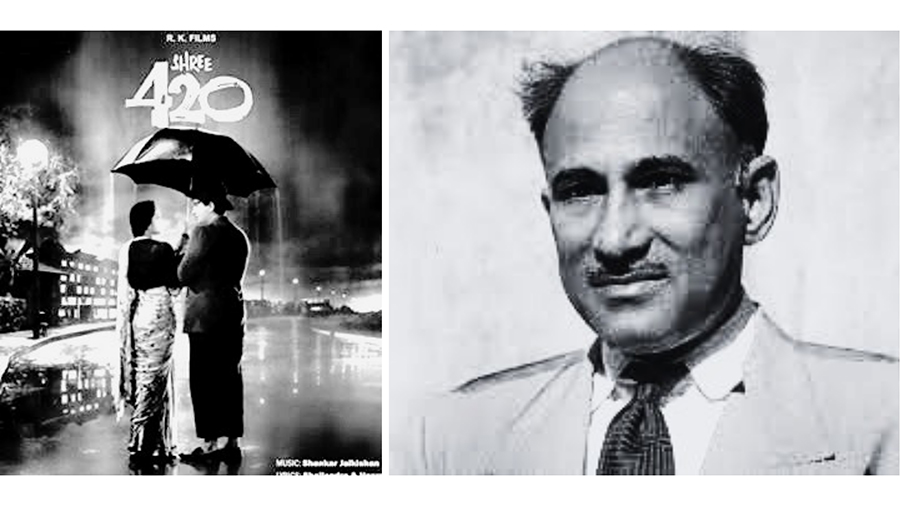
“I was born much before my birth” said Abbas, referring to his family background, such as maternal great grandfather Altaf Hussain ‘Hali’, the famous poet-reformer, paternal grandfather Ghulam Abbas, who hid revolutionaries during the 1857 mutiny and a social reformist father who once left the family home in Panipat, taking the infant Abbas with him, to go on a hunger strike against an ostentatious family wedding. Abbas was short statured - “the Vice-Chancellor got up to receive me - who looked like Ceylon in front of India!”, he had said. And, he wondered affectionately if his puny physique and ill health dated to those 18 hours of going hungry.
A passion for reform, a critique of the Raj, veneration for Gandhi, respect for all (young Abbas had to go hungry again when he spoke rudely to a servant boy) and love for his land were some of the assorted qualities he imbibed from his family. Coming to Bombay to join her son at the time of partition, his mother was asked if the family would shift to Pakistan. “No, thank god”, she said.
For all the advantages of his heritage, the debate about whether a human being was a product of her heredity or environment was a settled one for Abbas. If people went wrong, it was because of their social conditions and not because of their blood. He wrote Raj Kapoor’s Awara (1951) and directed Anhonee (1952), on the subject. In the former, Raj Kapoor famously played a judge's (Prithviraj Kapoor’s) abandoned son, trained to become a thief, while in Anhonee, Nargis portrayed two sisters, one of whom was brought up as a courtesan.
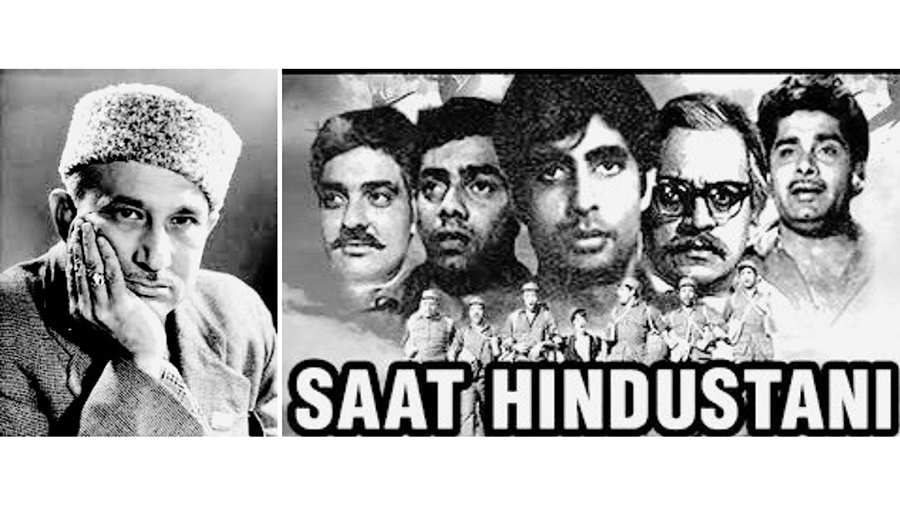
Abbas studied law at Aligarh Muslim University at the insistence of his father but he was already hooked to journalism and was bringing out his own anti-colonial student newspaper. In the early 30s, he joined the nationalist Bombay Chronicle, graduating from sub-editor to film critic and columnist. His legendary column ‘The Last Page’ ran in the Chronicle and later in Blitz from 1935-1987.
Abbas turned to making movies thanks to a repeated challenge from the producers whose films he panned as a critic - “it’s easy to criticize but wait till you try to make a film”. He was already a part-time publicist for Bombay Talkies to whom he also sold a script about a journalist - Naya Sansar (1941), starring Ashok Kumar. As he became active in the Progressive Writers’ Association and the Indian People’s Theatre Association (IPTA), he started getting involved in plays. From here emerged his film journey.
KA Abbas is often introduced as the director who gave Amitabh Bachchan a break in Saat Hindustani (1969). But his significant work began much earlier, with his first film as director-producer, the powerful Dharti ke Lal (1946) made on the notorious famine in Bengal of 1943. With a cast of IPTA theatre actors, a young Balraj Sahni, and music by Ravi Shankar, the film had many scenes that prefigured the lyrical back-and-white beauty of Bengal countryside, which we now associate with Bimal Roy. Abbas also wrote the screenplay for Chetan Anand’s Neecha Nagar (1946), a searing indictment of upper-class greed from a slum-dwellers point of view, which won the Grand Prix at the Cannes Festival and for V Shantaram’s Dr Kotnis ki Amar Kahani (1946).
Abbas became the thought behind Raj Kapoor’s films, with his stories and dialogues for Awara, Shree 420, Mera Naam Joker, and Bobby. Dialogues like (Shri 420), “In Bombay, you have to give a deposit for the privilege of sleeping on the footpath, and as for this footpath, it’s absolutely soft!” presented city life as an unfolding saga in which the underprivileged were essentially innocent while the rich were mostly heartless and manipulative. Abbas gave shape and voice to Kapoor’s iconic underdog-tramp persona.
The success of Awara (1951), in the USSR, led Abbas, a passionate believer in international cooperation, to an Indo-Russian production Pardesi (1957). He dabbled with making a film, Char Dil Char Rahein (1959), with stars like Nimmi, Meena Kumari, Raj Kapoor and Shammi Kapoor, but from then on stuck to newcomers like Dilip Raj - Shehar our Sapna (1963) - and Jalal Agha who made his debut in Bambai Raat ki Bahon Mein, (1967). The lyrical Shehar our Sapna, on the homeless of Bombay, won the National Award for Best Film and was nominated for Filmfare Awards as well, while Do Boond Pani (1972), starring Simi and Jalal Agha, on the coming of the Rajasthan canal to the desert won the National Award for Best Film on National Integration. It was a career full of community spirit and friendships - a struggling Dev Anand stayed for 6 months in his house and Shehar Aur Sapna was crowdsourced from friends.
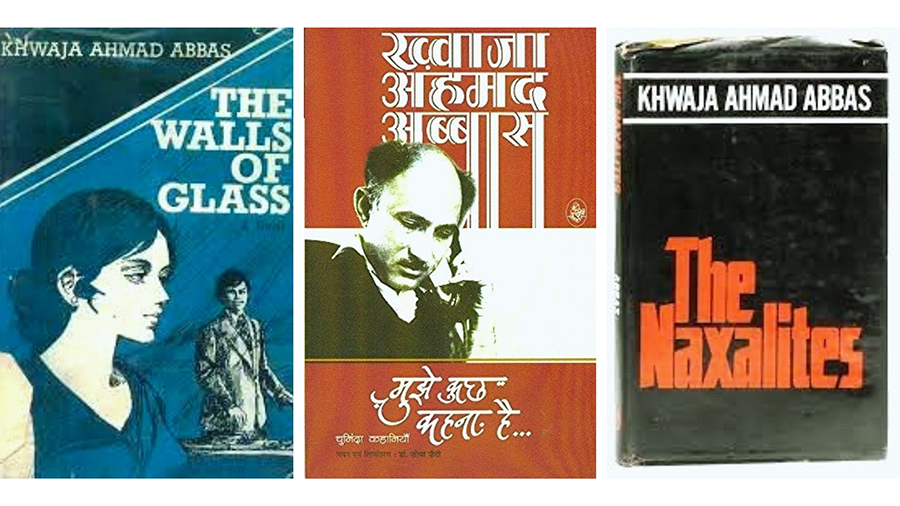
The perpetual lack of funds, the preference for newcomers, and the choice of like minded colleagues may explain, up to a point, why Abbas’s ideas worked so well when directed by others but not when he was at the helm himself. But beyond that point lies the problematic of ‘cinema with a message’.
In Abbas’s much-feted short story Ababeel (Sparrows), a hard-hearted farmer finds a sparrow’s nest in his house. He is about to wreck the nest, “…but something within him made him desist.” It is this ineffable quality of “something within”, which complicates the human experience and engenders moments of transformation - that often went missing from the films directed by Abbas. And this was inevitably in the service of the reality he was so keen to present, the point that he was so keen to make.
Characters emerge as fully-fledged representatives of a type: evil rich man, hard-hearted city dweller, committed labor leader. Their narratives appear devoid of mystery - the mysteries of motivation, behavior and consequences. Not for want of trying, Abbas was keen to show a complex Indian, “part coward, part brave, part superstitious and part a rational creature, part reactionary and progressive”. But his cinema, mostly, could not depict such nuances effectively. The filmmaker was clear that for him there was no difference between writing a film and writing an article for Blitz as long as his message got through. He added what he acknowledged were “gimmicks” to make a point, such as interspersing scenes of slum demolition with shots of with Nazi tanks.
However, in inspired moments his flair served powerfully: the title song of Gyarah Hazaar Ladkiyan, which shows hundreds of young women working in factories, offices, hospitals and schools is infectious in its spirit of celebration and its loveable desire to create a new icon. The face of a defeated, yet hopeful Tripti Mitra in Dharti ke Lal is unforgettable. And the potent sorrow in the songs of Shehar Aur Sapna, Ali Sardar Jafri's poetry sung by actor Manmohan Krishna without accompaniments, is haunting.
From canted camera angles reminiscent of Eisenstein, to theatrical songs and dances, and madmen playing a ‘Greek chorus’, from love seen as a potent life force against class/caste/religious differences to the repeated love-hate tension in his depiction of Bombay, Abbas’s films had very recognizable characteristics. Intentions were honorable, flaws exasperating and the message would seem hopelessly naive today.
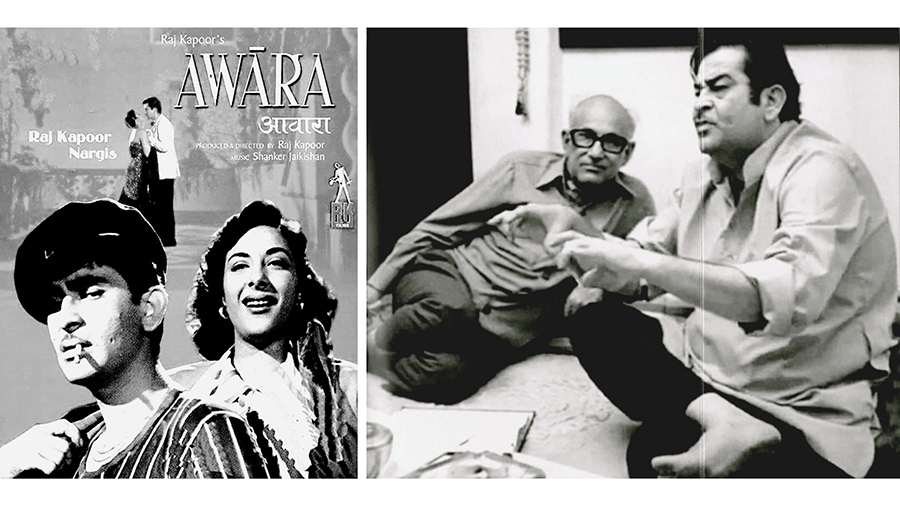
The message had to do with the filmmaker’s articles of faith: nationalism, socialism and secularism. Nehru was the hero of Abbas’s generation of educated nationalists - the young Congress leader who shifted the nationalist discourse from wanting a ‘dominion’ status for India to claiming complete independence. A young Abbas’s first meeting with the leading man of his “long love affair” took place on a train and had the student demanding, “Why are you travelling in first class?” - while Nehru signed his autograph book with a “Live Dangerously”.
Abbas whole-heartedly supported Nehru’s state-led planned economy and secularism as the way forward for India. Char Dil Char Rahein has a labor leader exhorting the ‘untouchable’ Chavali (Meena Kumari) that the solution to not just her oppression but also her personal sorrows lies in working on the road being collectively built under the 5-year plan. Abbas was thrilled with the idea of roads, steel plants and big dams. His Do Boond Pani was inspired by the mammoth Rajasthan Canal project, later the Indira Gandhi Canal, that would bring water to the desert region.
Post-Independence, he felt let down by his love, and questioned Nehru in a series of disappointed articles called “Jawahar writes to Nehru”, reminding the Prime Minister of the promises not implemented; but not enough to give up on him. Distraught after Nehru’s death, he made a children’s film Hamara Ghar (1964) with an all-children cast, because he had promised Nehru he would.
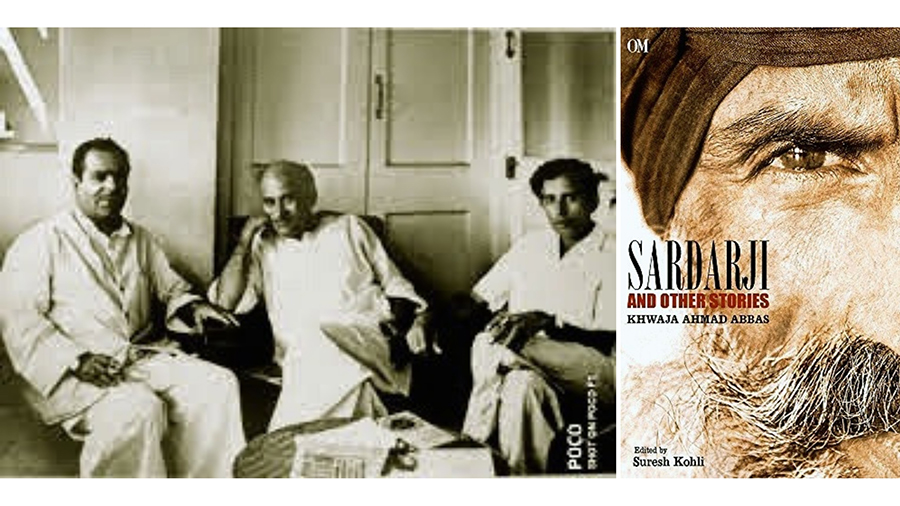
Abbas and his fellow travellers had faith that out of the ruins of feudal relations, religious boundaries and caste hierarchies, a new world would emerge. The 'new' throbbed in their philosophy and aesthetics - films named Naya Daur, poetry celebrating a Nayi Subah and Abbas’s production house called Naya Sansar. In an optimistic experiment with the new Indian, Abbas cast all the actors in his Saat Hindustani against their regional and religious identities. Bengali stalwart Utpal Dutt played a Punjabi, Malayalee actor Madhu played a Bengali and Amitabh Bachchan, played a Muslim poet.
For the socialist nationalists, the budding ‘new’ may have been threatened by power or thwarted by history, but it was not crushed by crises of faith. In the partition-time violence of Bombay, Abbas was radically shaken: “For several months a death wish obsessed me - I would don my Khadi clothes, put on a Gandhi cap, and take tram through the Muslim-majority areas, hoping to be mistaken for a Hindu”.
Later, he made an eponymous film on The Naxalites (1980), trying to understand the frustration that would drive youth to rebel so violently. Nevertheless, nearly all his films held out a note of hope. The ending of Dharti Ke Lal saw famine stricken peasants find light from collective farming, Aasman Mahal had a Nawab’s son earn his own living, and the end of Sheher Aur Sapna had the disenfranchised slum dwellers entering a dream world of the future.
Abbas’s heroines swam against the mainstream current. In Dharti ke Lal, a farmer’s wife Radhika (Tripti Mitra) is forced into prostitution to feed her infant but her love story with her husband continues. In Char Dil Char Rahein, Nimmi plays a prostitute’s daughter who gets a chance to marry her lover Ajit. But Ajit will not agree to live with her “fallen” mother and Nimmi refuses to accept it.
Inspired by the news that Bombay had a female labor force of 11,000, Abbas made Gyarah Hazaar Ladkiyan (1962) with Bharat Bhushan and Mala Sinha in the lead - a plea for India to look out for the vulnerable young girls “improving the future of a new India”. From the Gandhian Rupa (Kamini Kaushal) of Neecha Nagar to the heroic rape survivor and freedom fighter Maria (Shehnaaz) of Saat Hindustani, young female protagonists were portrayed by Abbas as transcendental voices of conscience and indomitable spirits.
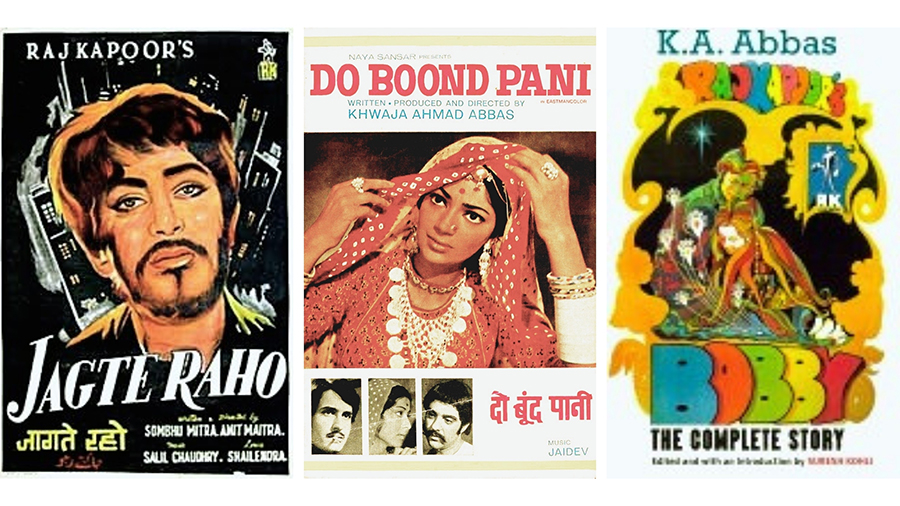
Abbas’s love story with his wife Mujji would make a great film in itself. At 28, young Abbas wrote to his cousin Mujtabai Khatoon about the disadvantages of marrying him - his low salary and the possibility of being arrested in the freedom movement. “Still I invite you to share the adventure of my life”. The young girl wrote back: “Agreed. That is the life I would like to lead - but I would claim equal rights to stand on my own feet.”
Their immensely loving partnership ended with her early death. The trajectory taken by Indira Gandhi’s politics disillusioned him further. But love of life kept Abbas going till the mid-1980s, writing, shooting and living his friendships. “I still feel alive and involved in mankind”, he said when seriously ill and dictating his memoirs in the mid-1970. “I am still the biggest bulk buyer of tickets for my own films! It was so when my first film premiered in 1941 and the feeling is just the same today…”
Abbas died a relatively lonely man in 1987, after two heart attacks, still trying to complete his film Ek Admi (1988), with Amitabh Bachchan paying his hospital bills. But “isn't it enough that one has lived fully, experienced the richest emotions, witnessed the exciting events of one’s time, participated in the great drama of human existence?” he asked in his memoirs. It certainly is.




-173X130.jpg)
-173X130.jpg)


-173X130.jpg)

-173X130.jpg)
-173X130.jpg)